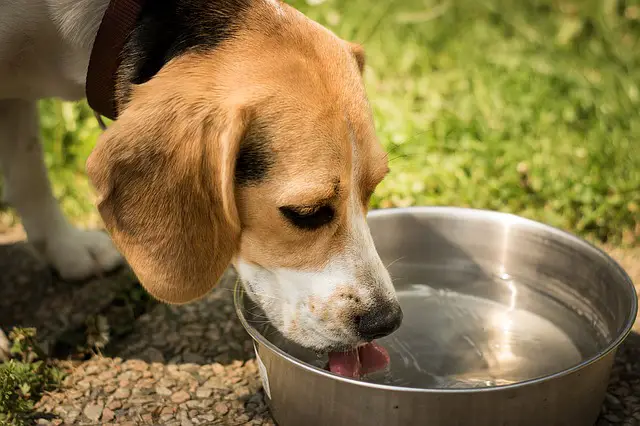To encourage a sick dog to drink water, try adding some low-sodium broth to the water to make it more appealing. You can also try offering ice cubes or wetting your dog’s mouth with a syringe.
Maintaining adequate hydration is crucial for a dog’s recovery. A sick dog may refuse to drink water due to illness, stress, or medication side effects. Encouraging water intake is essential for preventing dehydration and supporting the dog’s overall well-being. When a sick dog refuses to drink, it’s important to find creative ways to entice them to hydrate.
By following a few simple tips and tricks, you can help your furry friend stay hydrated and on the path to recovery.
Identifying Signs Of Dehydration
Identifying Signs of Dehydration
To monitor your dog’s hydration levels, observe its behavior and appearance. Watch for lethargy, sunken eyes, and dry nose and gums. These could indicate dehydration. Also, gently lift the skin at the back of the neck to check for elasticity. If the skin does not immediately return to its original position, your dog may be dehydrated. In addition, familiarize yourself with symptoms such as excessive panting and loss of appetite or energy. Being aware of these signs will help you identify dehydration in your dog.
Utilizing Flavorful And Hydrating Solutions
When trying to get a sick dog to drink water, it can be helpful to mix low-sodium broth with water to enhance the flavor and encourage hydration. Additionally, adding a bit of tuna juice to their water can make it more enticing for them to drink. Understanding the benefits of coconut water for dogs can also provide a natural and hydrating solution, as it is rich in electrolytes and can help replenish lost fluids.
“`I hope this HTML format meets your requirements! Let me know if there is anything else you need.Creating The Right Environment For Hydration
Ensuring your sick dog stays hydrated is crucial for their recovery. Providing access to fresh and clean water is the first step in creating the right environment for hydration. It’s essential to keep water within reach at all times for your dog, making it easier for them to drink as needed. Additionally, understanding the impact of temperature on a sick dog’s water consumption is important. For instance, offering lukewarm water can be more appealing to a sick dog than cold water. By addressing these factors, you can encourage your sick dog to drink water and support their well-being.

Credit: www.bulldogology.net
Frequently Asked Questions On How To Get A Sick Dog To Drink Water
How Do You Hydrate A Dog That Won’t Drink?
Encourage your dog to drink by adding water to their food, offering broth, or using a syringe to hydrate.
How Do I Get My Dog To Drink Water When Sick?
Encourage your sick dog to drink water by offering fresh water in a clean bowl. Add some low-sodium chicken or beef broth to entice them. You can also try ice chips for a refreshing change. Monitor their water intake closely to ensure they stay hydrated.
How Do You Get Water Down A Sick Dog?
To give water to a sick dog, use a syringe or dropper to administer small amounts at a time. Gently place the syringe in the side of the dog’s mouth and squirt in the water. Ensure the dog is in a comfortable position.
Why Do Sick Dogs Not Drink Water?
Sick dogs may not drink water due to nausea or feeling unwell. It can be a sign of underlying health issues. Ensure to consult a vet promptly to address any concerns about your dog’s drinking habits.
Conclusion
Ensuring your sick dog stays hydrated is crucial for their recovery. By following the tips and techniques outlined in this blog post, you can help encourage your furry friend to drink water. With patience, persistence, and the right approach, you can make a positive impact on your dog’s health and well-being.



